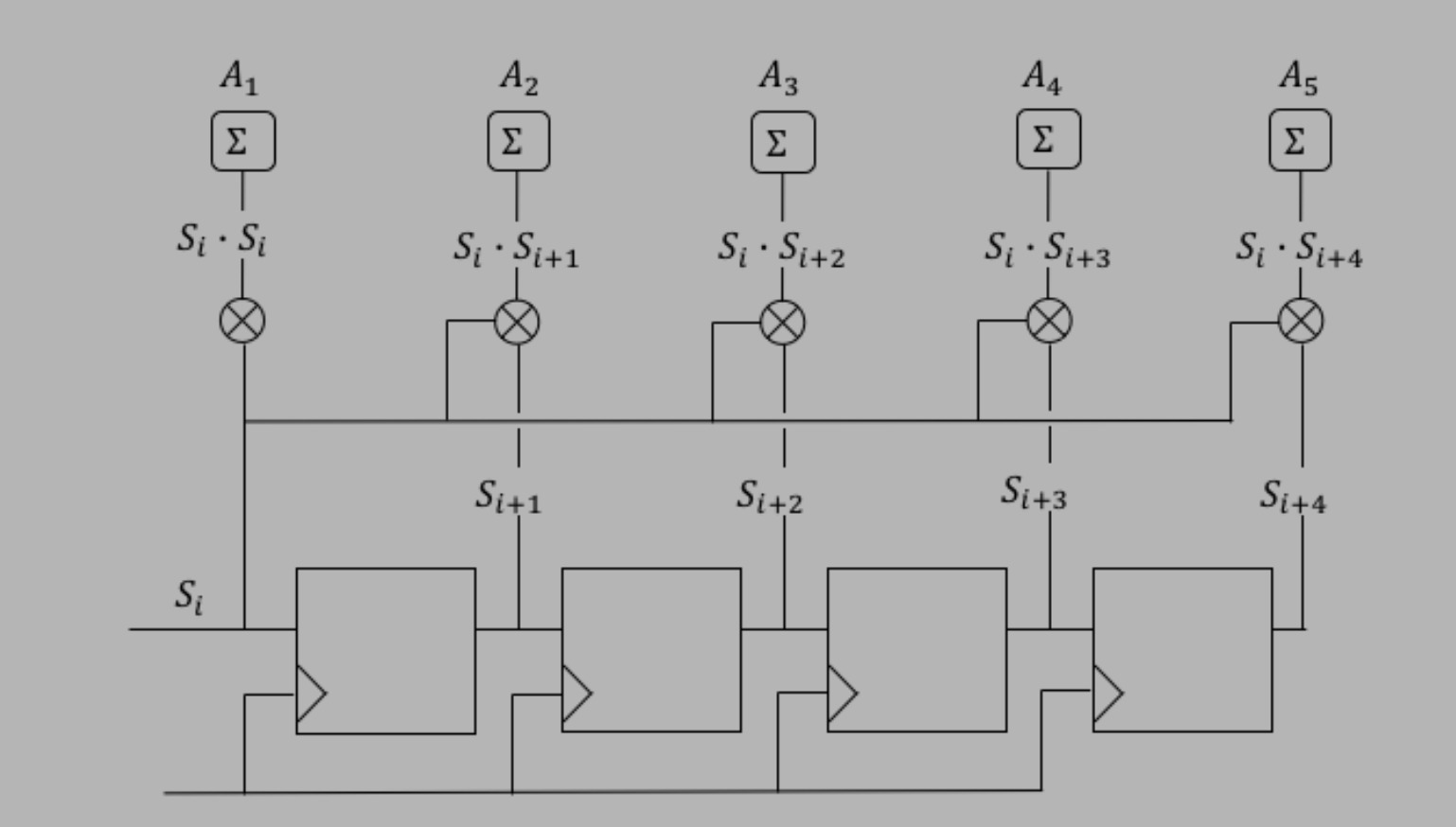I'm trying to implement a autocorrelation module into my FPGA. I have been doing some reattach acrossresearch on the internet and there are some complicated and advanced methods that use a Fast Fourier Transform (FFT) to do the autocorrelation.
However, all I need is a simple implementation, nothing too fancy. I came across this digital logic site that had shown ahas this diagram as:
Essentially, what I got out of this was that we chain D-Flipflip-Flopsflops (DFF) to create a shift register. From there we pull from the shift register or different DFFs and run them into a multiplier with the original \$S_{i}\$Si, then add the output. So my implementation from a program called digital is this:
Which I believe is the same, however, I am noticing some variations. I added more DFFs because I want to be able to correlate more bits. I also am not really sure if I implemented the "Sums" correctly,correctly; I also skipped the fist add from the first multiply for this reason.
Some other issues I had include issues from the program. I ultimately usedused this program because I can take the design and get Verilog code out of it. But when I try to export as Verilog I get the error:
Can anyone help confirm if I'm on the right track with this implementation or if it is correct.? It seems like the first adder is having issues but I am also unsure of what the first \$C_{i}\$Ci would be. In verilogVerilog I could just set it to a 0 bit, but I am not sure how to do that in a design.



